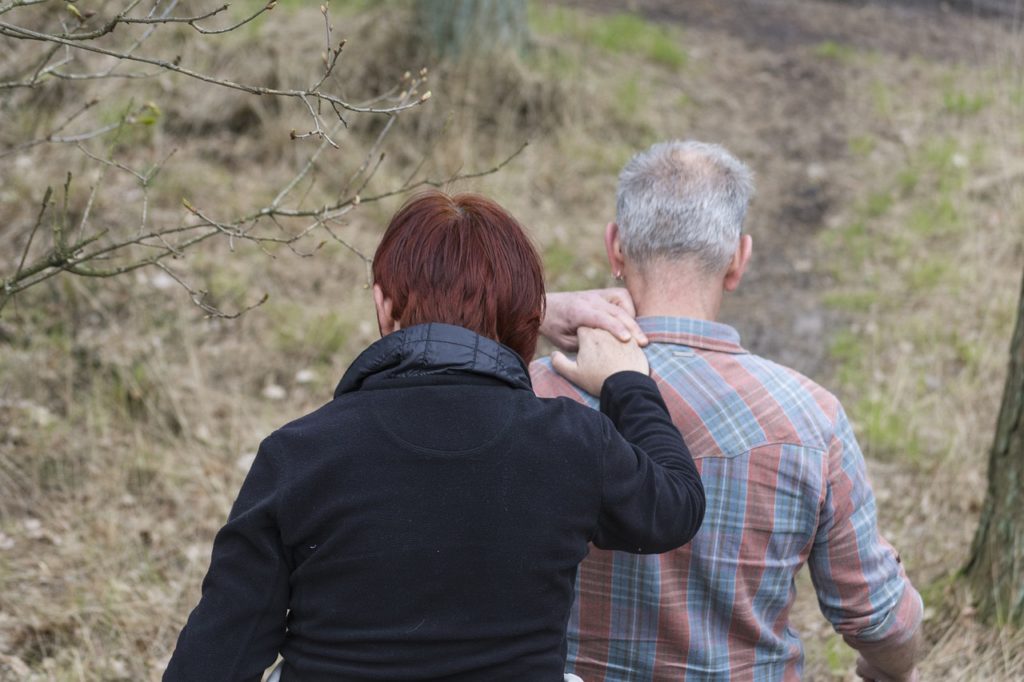
“Are you suffering from joint pain and wondering about the best home remedies for arthritis? In this video, Dr. Girnita discusses the best natural remedies you can use at home to treat arthritis and alleviate pain and inflammation.”

Samuel Sánchez, ICREA Research Professor at the Institute of Bioengineering of Catalonia (IBEC), will lead the OrthoBots project, which focuses on treating joint diseases using nanorobots.
Arthritis, an inflammatory disease that affects millions of people worldwide, is mainly characterised by osteoarthritis, a chronic degenerative disease that worsens with age and represents a significant economic burden for healthcare systems.
A promising alternative to current treatments is platelet-rich plasma (PRP) therapy. PRP harnesses the regenerative potential of growth factors, proteins found in the blood that play a key role in injury repair, to stimulate tissue repair processes, particularly in cartilage and bone cells. However, it is common for these proteins to be rapidly degraded upon contact with synovial fluid, limiting their therapeutic efficacy and distribution.
To overcome these obstacles, scientists are exploring advanced drug delivery systems that use nanoparticles as transporters. Although promising, passive diffusion of nanoparticles across viscous biological barriers, such as synovial fluid, remains a significant obstacle.
OrthoBots is presented as an answer to this problem. The project aims to develop enzyme-powered nanoparticles, known as nanorobots, to improve the transport and delivery of these growth factors, facilitating targeted cartilage regeneration.
“This innovative approach has transformative potential, potentially revolutionising arthritis therapy by overcoming current limitations and offering more effective and personalised treatment strategies,” says project leader Samuel Sánchez. Through systematic in vitro studies and in vivo proof of concept, OrthoBots aims to pave the way for the next generation of arthritis therapies, addressing unmet clinical needs and improving patient outcomes.
To carry out the project, Sánchez was awarded an ERC Proof of Concept Grant. This is a prestigious grant awarded by the European Research Council (ERC) to explore the commercial and societal potential of research projects that are or have been funded by the ERC. Applicants use this type of funding to test the practical feasibility of scientific concepts, explore business opportunities or prepare patent applications. This is the sixth grant Samuel Sánchez has received from the European Research Council and the third in the Proof of Concept category.
A groundbreaking study conducted by WEHI has unveiled revolutionary techniques for detecting necroptosis, a crucial factor in various inflammatory diseases such as psoriasis, arthritis, and inflammatory bowel disease. These findings signify a significant leap forward in the accurate diagnosis of necroptosis and present practical methods that can be replicated in hospitals worldwide. This offers a promising avenue for the development of new treatment approaches for inflammatory diseases and has the potential to significantly improve the lives of millions of individuals globally.
At a glance
Catching the cell death ‘culprit’
Necroptosis, a type of cell death associated with inflammation, has long been suspected as the ‘culprit’ driving many debilitating diseases associated with gut, skin, and lung conditions. However, identifying which cells undergo necroptosis in real-life situations has been difficult.
WEHI’s Dr Andre Samson, co-leader of the study, said the findings had cracked a challenging and hotly debated area of science.
“It is so exciting to finally be able to catch necroptosis in the act,” Dr Samson said.
The new methods precisely located necroptosis in patients with ulcerative colitis or Crohn’s disease, providing critical insights into how this cell death process contributes to various inflammatory diseases.
The findings further revealed that necroptosis responds not just to inflammation, but also to bacterial changes or immune issues.
“Among other results, we also found that when proteins like Caspase-8 cluster together in cells, it’s a sign of necroptosis,” Dr Samson said.
“This is a major leap forward in our journey to eventually delivering new medicines that can treat a long list of inflammatory diseases by stopping necroptosis.
“It helps us understand when and where necroptosis happens, both in healthy and disease situations.”
Lifesaving atlas for the future
The research opens new windows to understanding the intricate mechanisms of cell death and its connection to inflammatory diseases.
The team behind the study referred to their work as an “atlas of necroptosis” because it provides a precise map of which cells in the body are capable of undergoing necroptosis.
“We can now confidently visualise where and when necroptotic cell death can happen in the body,” said Prof Murphy.
In the spirit of collaboration, Prof Murphy emphasised that a key goal of the study was to discover a solution that could be easily replicated in both the laboratory and clinical settings.
“Most importantly, researchers and clinicians around the world will now be able to use these new methods, especially as liquid handling robots for immunostaining are common in hospitals and pathology departments worldwide,” he said.
“The next phase is to use these robotic methods to advance our understanding of which diseases could benefit from medicines that block necroptosis.”
The successful development of these automated methods to detect necroptosis in patients is just the beginning. The research team plans to extend their techniques to investigate other gut diseases, such as coeliac disease, and a broader range of inflammatory conditions of the skin, lung and kidney.

Informal carers looking after a loved one with arthritis are financially worse off than non-carers to the sum of $388 million, Griffith University research has discovered.
That figure will increase to $576.9 million by 2030, painting a stark future for informal carers who are not in the labour force and do not receive any monetary compensation in exchange for the care provided.
Informal carers are also less likely to participate in the workforce due to the demands of their caregiving duties.
Professor Lennert Veerman from Griffith’s School of Medicine and Dentistry co-authored a paper with researchers from Macquarie University that assessed the economic burdens associated with the increasing number of Australians living with chronic disease—arthritis.
Arthritis, a musculoskeletal disease, can be a costly disease to treat due to its high prevalence and the lifelong nature of the illness.
Professor Veerman said the research aimed to forecast the economic losses related to caring for people with arthritis from 2015-2030.
“People caring for someone with arthritis earn about $1,000 per week less than similar people who do not have caring responsibilities,” he said.
“Unfortunately, that figure is projected to increase by 22 per cent by 2030, impacting informal carers more economically.
“This equates to a total economic loss of around half a billion dollars annually, and reduced tax revenue is about $100 million annually.
“This is further proof that our informal carers are economically worse off than employed non-carers, especially when the future economic impact of informal carers is projected to increase.”
The paper has prompted researchers to encourage decision-makers to increase their efforts to prevent chronic disease, improve quality of life, and increase economic growth.
The paper ‘Economic impact of informal caring for a person with arthritis in Australia from 2015 to 2030: a microsimulation approach using national survey data’ has been published in BMJ Open.
Informal carers looking after a loved one with arthritis are financially worse off than non-carers to the sum of $388 million, Griffith University research has discovered.
That figure will increase to $576.9 million by 2030, painting a stark future for informal carers who are not in the labour force and do not receive any monetary compensation in exchange for the care provided.
Informal carers are also less likely to participate in the workforce due to the demands of their caregiving duties.
Professor Lennert Veerman from Griffith’s School of Medicine and Dentistry co-authored a paper with researchers from Macquarie University that assessed the economic burdens associated with the increasing number of Australians living with chronic disease—arthritis.
Arthritis, a musculoskeletal disease, can be a costly disease to treat due to its high prevalence and the lifelong nature of the illness.
Professor Veerman said the research aimed to forecast the economic losses related to caring for people with arthritis from 2015-2030.
“People caring for someone with arthritis earn about $1,000 per week less than similar people who do not have caring responsibilities,” he said.
“Unfortunately, that figure is projected to increase by 22 per cent by 2030, impacting informal carers more economically.
“This equates to a total economic loss of around half a billion dollars annually, and reduced tax revenue is about $100 million a year.
“This is further proof that our informal carers are economically worse off than employed non-carers, especially when the future economic impact of informal carers is projected to increase.”
The paper has prompted researchers to encourage decision-makers to increase their efforts to prevent chronic disease, improve quality of life, and increase economic growth.